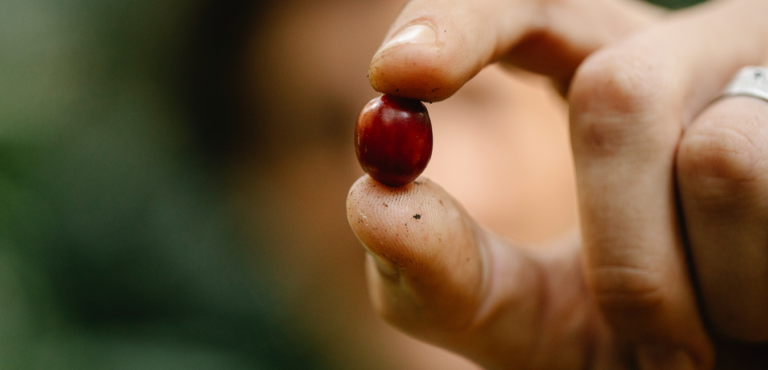Coffee Processing: Behind The Scenes
A lesser-known part of the coffee ecosystem is the processing method. It seldom gets attention, and yet it’s an integral part of flavor development. Coffee processing refers to the way a seed is removed from its cherry. Coffee cherries have a seed, pulp, mucilage, and protective skin. Climate & environmental factors also play a role in deciding the process. The traditional processing methods are washed, natural, honey, and wet-hulled. Each of these employs a different method that imparts a unique flavor to the bean.
During any of the processes, the beans need some attention and require to be moved around every so often to avoid any undesired fermentation or mold on account of excess moisture. Farmers often research climatic conditions before deciding on the processing method. If it’s especially humid, natural is usually ruled out because, in these conditions, the coffee cherries are prone to splitting. Whereas if it’s dry, producers may veer towards the honey process or natural process since none of the sugars in the soon-to-be bean will be at risk of getting washed away.

Let’s dive into the methods, explore how each one affects your cup, and help you make an informed purchase.
Natural/Dry Coffee
Natural/Dry is often considered the original processing method. It’s an elementary approach that was first practiced in Ethiopia. Here, the bean is left to dry in the sun with the coffee fruit still attached to the bean. When it’s done well, the sweetness is emphasized and the coffee is well-rounded. Over a course of 4-6 weeks, the beans will ferment. During this period, the sugars and mucilage (a sticky substance that coats the seed) will latch onto the beans developing flavors and sweetness. After the coffee is fully dried, a machine separates the pulp & skin from the seed.

While this process is less demanding financially, it proves to be a challenge because of the specific climatic conditions required to execute. For the longest time, the natural process was looked down upon for being inconsistent. This is often a result of an uneven drying process. Unripe coffee fruits are left to dry along with ripe ones causing varied flavor development in the beans. But many believe that naturally processed coffee is due for a comeback. The tasting notes of these beans are fascinating and could spell trouble for washed coffees if the consistency is matched. Here are our picks for the best naturally processed coffees.
Washed Coffee
This processing method is built on the idea of celebrating what’s on the inside. The bean is in full focus. Here, a de-pulping machine separates the seeds from the fruit before drying. Beans are then introduced to water to wash off the rest of the mucilage, after which the seeds are left to dry in the sun. This method, however quick and straightforward, has always been considered wasteful and not the most sustainable. A massive amount of water is needed and the washing stations generate solid waste aplenty. The infrastructure coupled with the maintenance cost makes this process unattainable for some farmers.

Washed process depends on the absorption of nutrients & sugars during the growth cycle. While these coffees depend on environmental factors akin to natural coffee, the mechanism is strictly intrinsic. Soil, weather, varietal, fermentation, and washing process play a key role in the bean’s flavor profile. If you’re curious, we recommend starting with these washed coffees.
Honey/Pulped Natural Coffee
Honey-processed coffee is considered to be halfway between washed and natural coffee. It involves a de-pulping machine that removes some of the skin and mucilage from the coffee cherries, however, the seeds aren’t washed afterward. Instead, the beans are dried on beds in the sun. The term ‘honey’ represents the sticky mucilage on the bean. The more ‘honey’ left on the bean, the darker the color after processing.

Depending on the extent of ‘honey’ removed, the final coffee may be called white, yellow, gold, red, or black honey. White, gold and yellow honeys have very little mucilage whereas red and black have significantly more. The flavor profile is fruity but less pronounced than natural and has a rounded acidity that surpasses washed coffee. More mucilage typically equals more flavor, intensity, and characteristics of that coffee. These are our favorite honey/pulped natural coffees.
Wet Hulled Coffee
Often mistaken for washed coffee, the wet-hulled method employs a different mechanism to process coffee. Here, de-pulping machines remove the seeds from the coffee cherry but the process after this step differentiates wet-hulled coffee from the rest. Rather than moving to drying beds or tanks, the cherries are stored in plastic tanks with the mucilage still intact. This creates a thick coating on the seeds. The seeds are then put through hulling to remove this coating. After doing so, the beans are dried in the sun.
The advantage of using the wet-hulled method lies in the environmental conditions. In countries like Indonesia, high humidity hinders the drying process. By adopting the wet-hulled process, drying time is halved. A huller works on the basic principle of agitation and does so till the parchment crumbles away. The unique tasting notes born from wet hulling are worth a try, get some here.

With more concerned eyes looking at the environment every day, many farmers have started thinking about sustainability. Farms and cooperatives around the world have begun switching to eco-friendly processing methods. And the change in mindset extends beyond. Many producers experiment with their processes to further reduce the environmental impact. When you’re coffee shopping, keep an eye on the processing method labeled on the bag. Each one is unique and they all deserve to be celebrated for their differences. So the next time you’re picking up some white honey processed Costa Rican or naturally processed Brazilian coffee, you know exactly what you’re getting yourself into.






